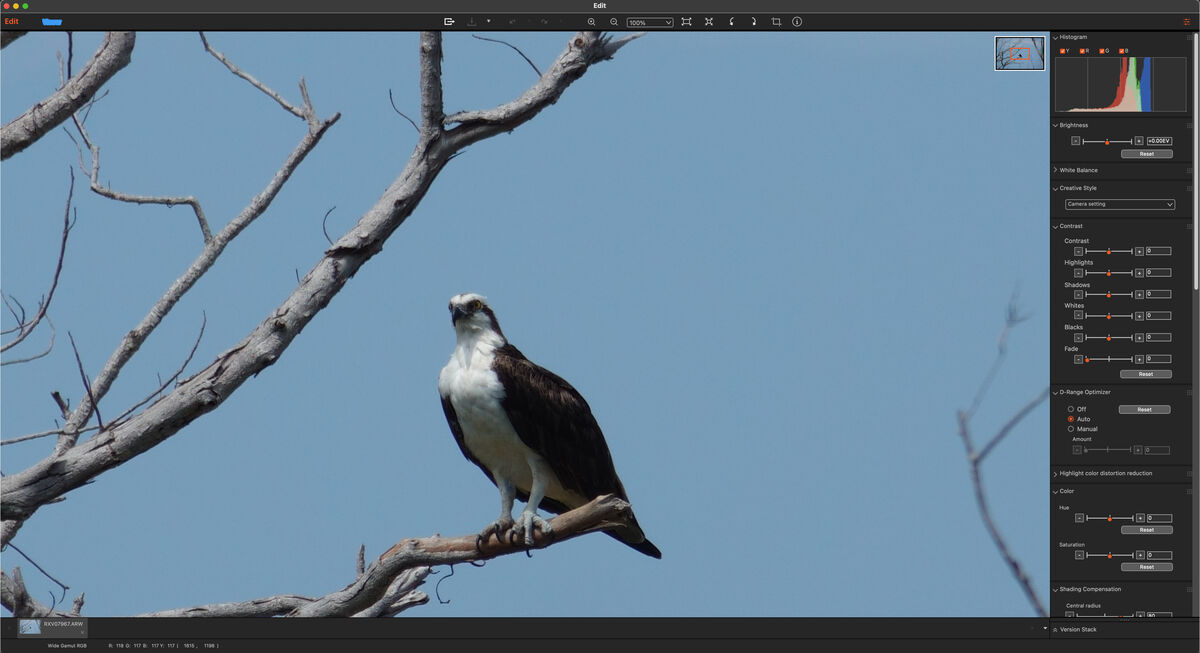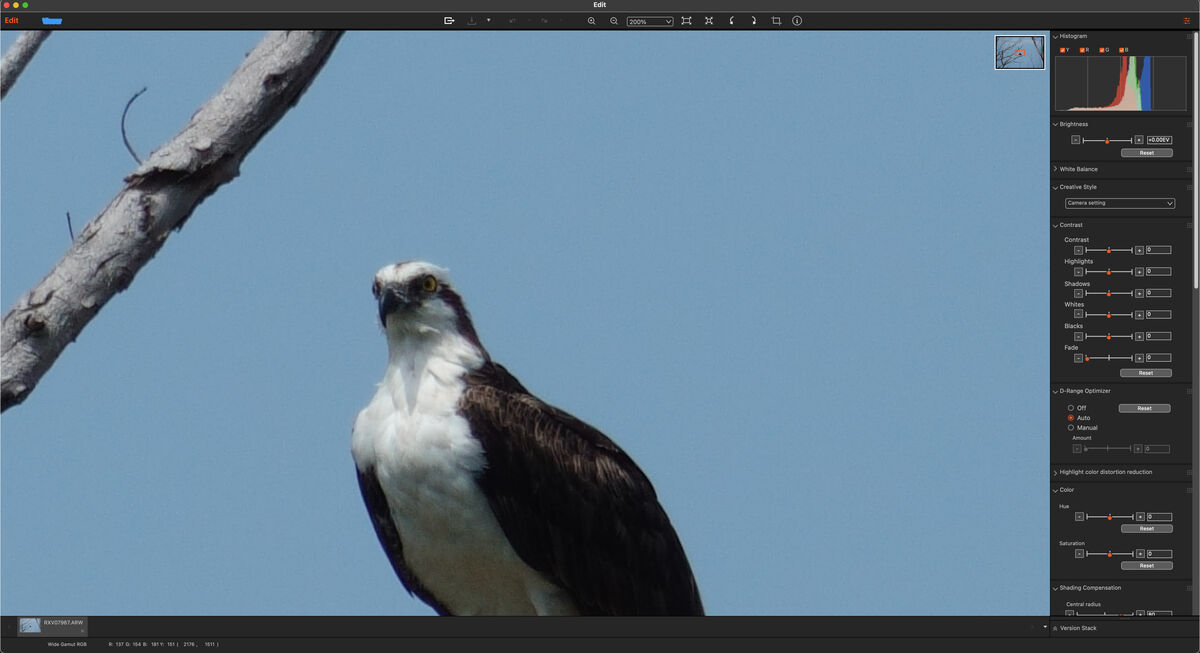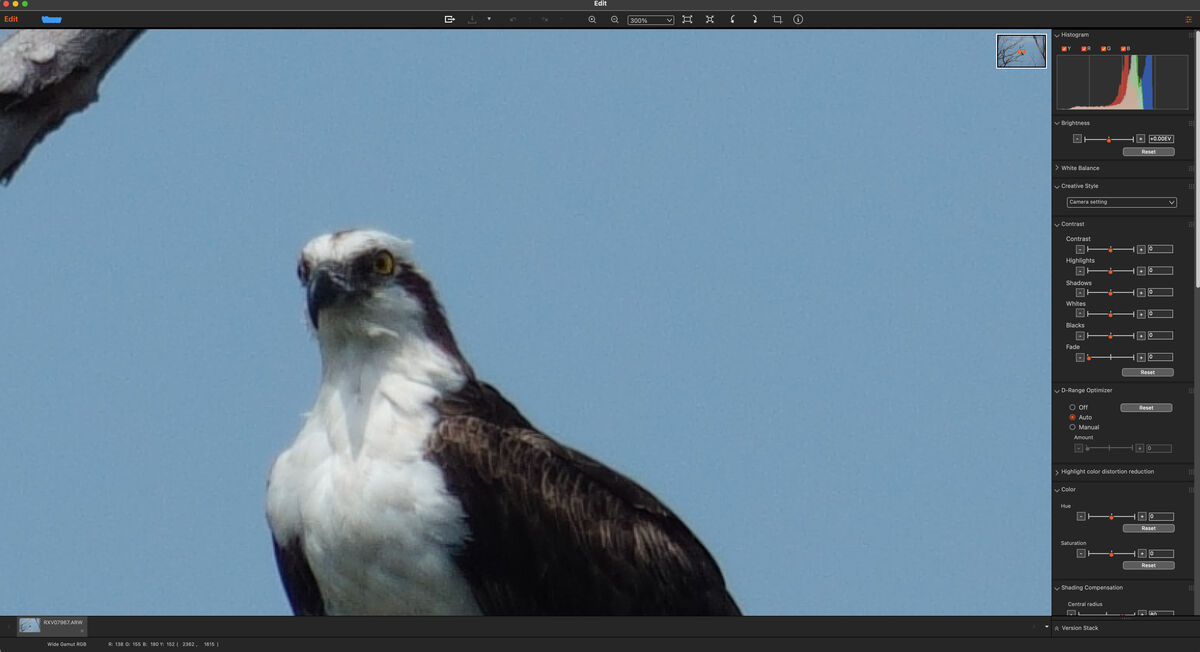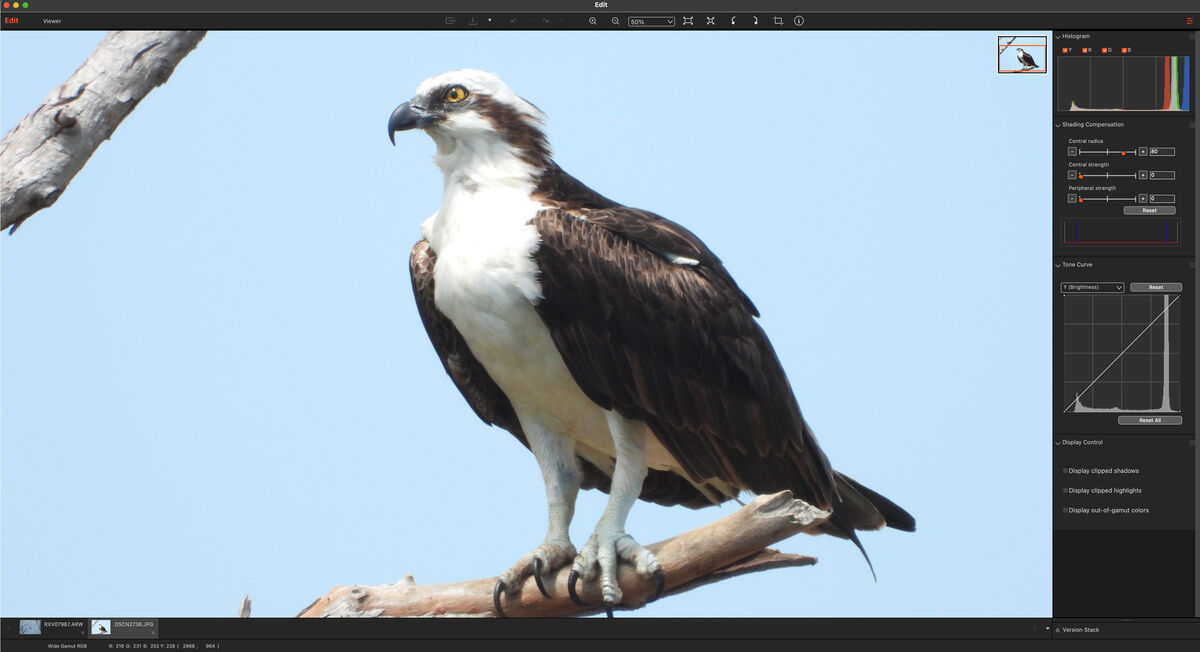Sharpness comparisons between 3 cameras
Mar 22, 2024 14:21:41 #
a6k
Loc: Detroit & Sanibel
For those of you who prefer the expert stuff:
https://www.imaging-resource.com/PRODS/sony-rx10-iii/FULLRES/RX10M3hSLI00100NR2D.HTM
https://www.imaging-resource.com/PRODS/nikon-p1000/FULLRES/P1000hSLI0100NR2D.HTM
I used the RX10M3 in this case because the "4" apparently had not been tested in this way and to the best of my knowledge (have owned both) the lens and sensor are the same.
https://www.imaging-resource.com/PRODS/sony-rx10-iii/FULLRES/RX10M3hSLI00100NR2D.HTM
https://www.imaging-resource.com/PRODS/nikon-p1000/FULLRES/P1000hSLI0100NR2D.HTM
I used the RX10M3 in this case because the "4" apparently had not been tested in this way and to the best of my knowledge (have owned both) the lens and sensor are the same.
Mar 22, 2024 16:02:46 #
a6k wrote:
imagextrordinair said: br I Your SOOC image has b... (show quote)
Beautiful subjects in awesome clarity 💎💎💎
Mar 22, 2024 17:30:18 #
imagextrordinair
Loc: Halden, Norway
a6k wrote:
imagextrordinair said: br I Your SOOC image has b... (show quote)
They are sharpened because you can only post a finished Jpeg, no one can see a Raw file, because a Raw file is simply raw data. A controlled study would be best served with an equal playing field that would include the same editing software, and shooting conditions.
I think a more compelling presentation could have been that the examples are the "best possible Jpegs from each camera", period.
These are end-result Jpeg images and there should be a determined winner. Not so much because of the recipe used, but more for the final meal spread on the table. That would credit you as an editor presenting your best regardless of variables that could be argued...
Mar 23, 2024 09:13:34 #
a6k
Loc: Detroit & Sanibel
imagextrordinair wrote:
They are sharpened because you can only post a fin... (show quote)
Au contraire, you can see a raw file if you use software designed for that. FastRawViewer and RawDigger can and to accomplish that. So does "Raw Photo Processor 64" which only runs on Mac.
There is no accessible raw file for the Nikon because it was shot in "bird mode". The JPG from the RX10 was as close to SOOC as possible.
But even a casual look at the two shots of the osprey will show you that the SOOC from the Nikon is better by so much that equal post processing would not change anything.
I am probably wasting my time with you but here are 4 screen prints from Sony Edit which can read Sony raw files. it is the same Sony raw file I already provided in a previous post. Three images are from the raw Sony file and the reason I am showing you the screen prints is so that you can see what the camera settings were. One is using the same software to look at the Nikon JPG, also with settings shown. The three Sony views are at 100%, 200% and 300%. I stopped there because of the pixellation. The Nikon shot is at 50%. All of this can be seen on the screen prints. You can see the severe pixellation better if you download the screenprint so you can see it full size on your own monitor. Note that in the upper right of the display is an indicator of the cropping being done by the app.
Some comparisons are too easy and obvious to justify all this silly conversation.
As for "winner". I leave that up to the viewer. All I wanted to do was offer consumer level information on an assertion that I knew to be unsupportable. The guy who said it has not chimed in on this thread. Some folks would not want to frustrate themselves with post processing other than perhaps cropping. This should be enough for them.
Mar 25, 2024 10:00:36 #
billnikon wrote:
Sorry, amateur lens tests only prove one thing, amateur's should not do lens tests.
I strongly disagree. Learning to use objective tests is the best way to find the optimal ways to use your tools. If you cannot measure a process you cannot control it.
If you are saying that sharing these tests with others implying they don't need to test, then I think you have a point.
Mar 25, 2024 10:42:27 #
tgreenhaw wrote:
I strongly disagree. Learning to use objective tests is the best way to find the optimal ways to use your tools. If you cannot measure a process you cannot control it.
If you are saying that sharing these tests with others implying they don't need to test, then I think you have a point.
If you are saying that sharing these tests with others implying they don't need to test, then I think you have a point.
We all do our own thing - and should have the appropriate kit for our needs - which might be different to the rest. We are not in a competition - we might enjoy showing our work - and perhaps receiving accolades - but so what?
Showing our work is not showing off - or is it?

Mar 25, 2024 20:07:31 #
RetCapt
Loc: NorCal mountains
Some years ago I ran my own comparison test, one as amateur as it can get.
Around 1990 I spent some time on company business (training) in DC. On the weekend I went to Mt. Vernon. The camera I was using was my Nikonos 5. Despite its marine emphasis it made for a great camera for scenic photography, and it was tough long before that term was applied to cameras. It had become my hiking, backpacking and travel camera. I still have it as it is just too nice to let go.
One of my photographs was taken at the white entrance gates with President Washington's home in the distant background, framed by the two gates. It was taken during the summer late in the afternoon with the sun coming across from the side and behind me. The lighting was ideal. I was using Kodak color print film, so I had to have it lab processed. I had the lab make an enlargement for me (8X12") and entered it in our local county fair. It won a blue ribbon. To me it looked very good, and apparently the judges also thought so.
Fast forward some 20 years, and we were back in the DC area, staying with our daughter and her family. One day the girls had something they wanted to do and told me I was on my own.
I returned to Mt. Vernon, because I had an idea. By this time my travel camera was a Sony Nex @ 5, the first of the two introductory models. I had on my Nex 5 the Sony (not Tamron based) chrome 18-200mm lens, as that allowed me to just carry one lens.
My plan was to replicate as closely as possible the same conditions I had when I made my film image, and then make the same image using my digital camera.
This was about the same time of day and year as my film photograph. The lighting appeared identical. I shot in JPEG, as I still do, since a number of my cameras are JPEG only and I prefer to keep my post processing methods consistent regardless of which camera I happen to be using.
This was not intended to be a SOOC test. I wanted the image to be as good as I could make it, so I did my usual post processing using PSE.
When I was finished editing, I made an 11X14" print (which is now on our wall at home) to compare it with what I (and the lab) had gotten from my Nikonos.
The results were so obvious as to be unquestionable. The digital print was far superior to the film print in all respects. So much so that I have used the two photos to demonstrate to friends the superiority of digital photography over 35mm film photography, at least in my hands.
This was about as unscientific and subjective as it can get. But for me it was further and more definitive proof of the superiority of digital photography over 35mm film photography. Maybe not for everyone, or even for anyone else, but for me.
I did not need this comparison to convince my photographer friends. They had been into digital long before me as I did not switch until 2009-2010, so I was preaching to the choir.
For me though it was an enjoyable and informative test since I could compare the results side by side. It was further confirmation that I was never going back.
I still have the Nex @ 5, and it still works perfectly. I also still have that 18-200mm lens, but now it lives on my @6300. The Nex @ 5 has the 18-55mm kit lens on it, which makes for a great compact rig. Whichever I take with me on any given safari depends on what I intend to photograph.
I have no intent to update either rig. They took great photographs when I bought them, and they take the same photographs now. The rest is up to me. I am where the buck stops.
Around 1990 I spent some time on company business (training) in DC. On the weekend I went to Mt. Vernon. The camera I was using was my Nikonos 5. Despite its marine emphasis it made for a great camera for scenic photography, and it was tough long before that term was applied to cameras. It had become my hiking, backpacking and travel camera. I still have it as it is just too nice to let go.
One of my photographs was taken at the white entrance gates with President Washington's home in the distant background, framed by the two gates. It was taken during the summer late in the afternoon with the sun coming across from the side and behind me. The lighting was ideal. I was using Kodak color print film, so I had to have it lab processed. I had the lab make an enlargement for me (8X12") and entered it in our local county fair. It won a blue ribbon. To me it looked very good, and apparently the judges also thought so.
Fast forward some 20 years, and we were back in the DC area, staying with our daughter and her family. One day the girls had something they wanted to do and told me I was on my own.
I returned to Mt. Vernon, because I had an idea. By this time my travel camera was a Sony Nex @ 5, the first of the two introductory models. I had on my Nex 5 the Sony (not Tamron based) chrome 18-200mm lens, as that allowed me to just carry one lens.
My plan was to replicate as closely as possible the same conditions I had when I made my film image, and then make the same image using my digital camera.
This was about the same time of day and year as my film photograph. The lighting appeared identical. I shot in JPEG, as I still do, since a number of my cameras are JPEG only and I prefer to keep my post processing methods consistent regardless of which camera I happen to be using.
This was not intended to be a SOOC test. I wanted the image to be as good as I could make it, so I did my usual post processing using PSE.
When I was finished editing, I made an 11X14" print (which is now on our wall at home) to compare it with what I (and the lab) had gotten from my Nikonos.
The results were so obvious as to be unquestionable. The digital print was far superior to the film print in all respects. So much so that I have used the two photos to demonstrate to friends the superiority of digital photography over 35mm film photography, at least in my hands.
This was about as unscientific and subjective as it can get. But for me it was further and more definitive proof of the superiority of digital photography over 35mm film photography. Maybe not for everyone, or even for anyone else, but for me.
I did not need this comparison to convince my photographer friends. They had been into digital long before me as I did not switch until 2009-2010, so I was preaching to the choir.
For me though it was an enjoyable and informative test since I could compare the results side by side. It was further confirmation that I was never going back.
I still have the Nex @ 5, and it still works perfectly. I also still have that 18-200mm lens, but now it lives on my @6300. The Nex @ 5 has the 18-55mm kit lens on it, which makes for a great compact rig. Whichever I take with me on any given safari depends on what I intend to photograph.
I have no intent to update either rig. They took great photographs when I bought them, and they take the same photographs now. The rest is up to me. I am where the buck stops.
Mar 26, 2024 02:45:33 #
RetCapt wrote:
Some years ago I ran my own comparison test, one a... (show quote)
Good post - worth the read.

If you want to reply, then register here. Registration is free and your account is created instantly, so you can post right away.





